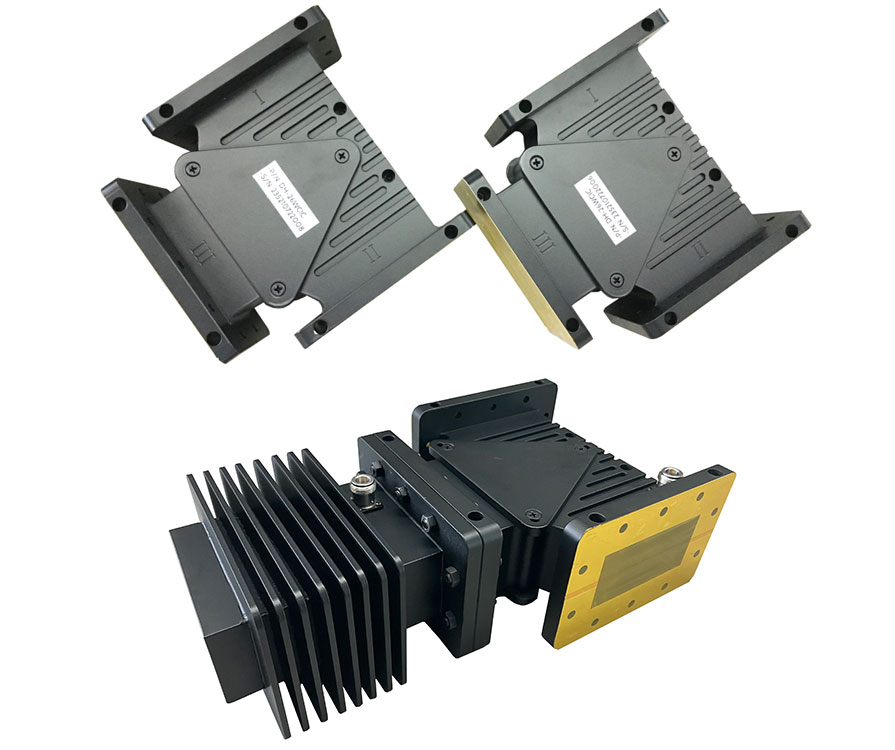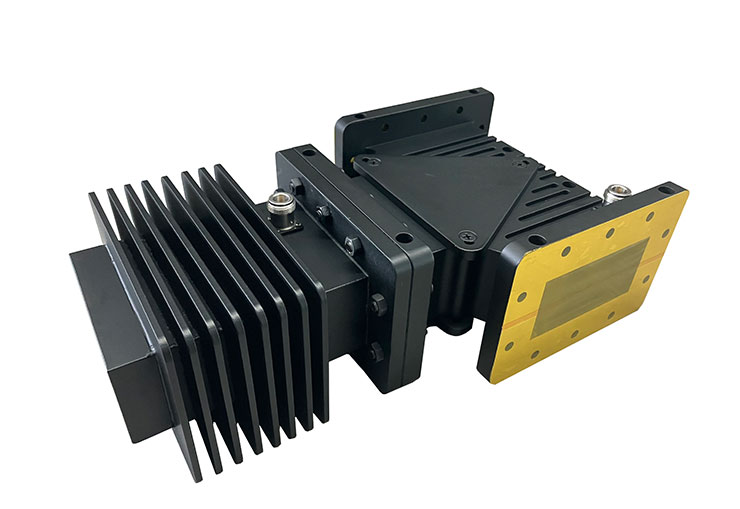Dolph Microwave offers a standard product line of waveguide isolators ranging from WR70 to WR 900. For more information feel free to call us and discuss your needs with one of our sales engineers.

Flange type: Multiple types available – see Dolph Microwave Flanges page.
Finish: Corrosion protection plus black/grey top coat.
Model No | Freq Range (GHz) | Operating Bandwidth (MHz) | VSWR (Max) | IL (dB) (Max) | Isolation (dB) (Min) | WG Type | Flange | Material | |
IEC | EIA | ||||||||
DH-70WISO | 5.38-8.17GHz waveguide isolators | 700 | 1.20 | 0.3 | 20 | R70 | WR137 | FDP/FDM | Al/Cu |
DH-84WISO | 6.57-9.99GHz waveguide isolators | 700 | 1.20 | 0.3 | 20 | R84 | WR112 | FBP/FBM/FBE | Al/Cu |
DH-100WISO | 8.2-12.5GHz waveguide isolators | 800 | 1.20 | 0.3 | 20 | R100 | WR90 | FBP/FBM/FBE | Al/Cu |
DH-120WISO | 9.84-15.0GHz waveguide isolators | 1000 | 1.20 | 0.3 | 20 | R120 | WR75 | FBP/FBM/FBE | Al/Cu |
DH-140WISO | 11.9-18.0GHz waveguide isolators | 1000 | 1.20 | 0.3 | 20 | R140 | WR62 | FBP/FBM/FBE | Al/Cu |
DH-180WISO | 14.5-22.0GHz waveguide isolators | 1000 | 1.20 | 0.3 | 20 | R180 | WR51 | FBP/FBM/FBE | Al/Cu |
DH-220WISO | 17.6-26.7GHz waveguide isolators | 2000 | 1.20 | 0.3 | 20 | R220 | WR42 | FBP/FBM/FBE | Al/Cu |
DH-260WISO | 21.7-33.0GHz waveguide isolators | 2000 | 1.20 | 0.3 | 20 | R260 | WR34 | FBP/FBM/FBE | Al/Cu |
DH-320WISO | 26.3-40.0GHz waveguide isolators | 2000 | 1.20 | 0.3 | 20 | R320 | WR28 | FBP/FBM/FBE | Al/Cu |
DH-400WISO | 32.9-60.1GHz waveguide isolators | 2000 | 1.30 | 0.6 | 20 | R400 | WR22 | FUGP | Cu |
DH-500WISO | 39.2-59.6GHz waveguide isolators | 2000 | 1.30 | 0.6 | 20 | R500 | WR19 | FUGP | Cu |
DH-620WISO | 49.8-75.8GHz waveguide isolators | 2000 | 1.30 | 0.6 | 20 | R620 | WR15 | FUGP | Cu |
DH-740WISO | 60.5-91.9GHz waveguide isolators | 2000 | 1.30 | 0.8 | 20 | R740 | WR12 | FUGP | Cu |
DH-900WISO | 73.8-112GHz waveguide isolators | 2000 | 1.30 | 1.0 | 20 | R900 | WR10 | FUGP | Cu |
*Indicates Model Number. See Ordering Information for complete part number.
A circulator is direct the flow of microwave or radio-frequency signals in RF systems which is normally a 3 or 4-port components. The operational principle is transmits input signal from 1 port to the next, The ports can be as input signal, output signal or termination and generally have a line impedance of 50Ω.
An isolator is a circulator as well but the difference is it has only 2 ports that transfer a signal, while the third port has a termination resistor connecting with ground. It protects RF components from excessive signal reflection. If port A signal is well matched with port B, then the signal to port B lowest loss. If not match, the signal will pass to port C, which will be dissipated into heat. Port A is the input and port B is output.


The waveguide isolator is a non-reciprocal two-port device that transmits electromagnetic waves in one direction, and the reverse transmission of the signal is isolation, so the isolator is also called an inverter.
In microwave systems, it is mainly used to control the transmission of electromagnetic wave signals in one direction, and at the same time reduce the influence of reflected signals on the system or on the source.
The typical specifications of the full-band isolator are shown in the table above, and the waveguide specifications, flanges, operating frequencies, indicators, etc. Can also be customized according to customers' requirements.
Other Standard Waveguide Components You may have interests in
different types of waveguide attenuators
magic tee in microwave engineering